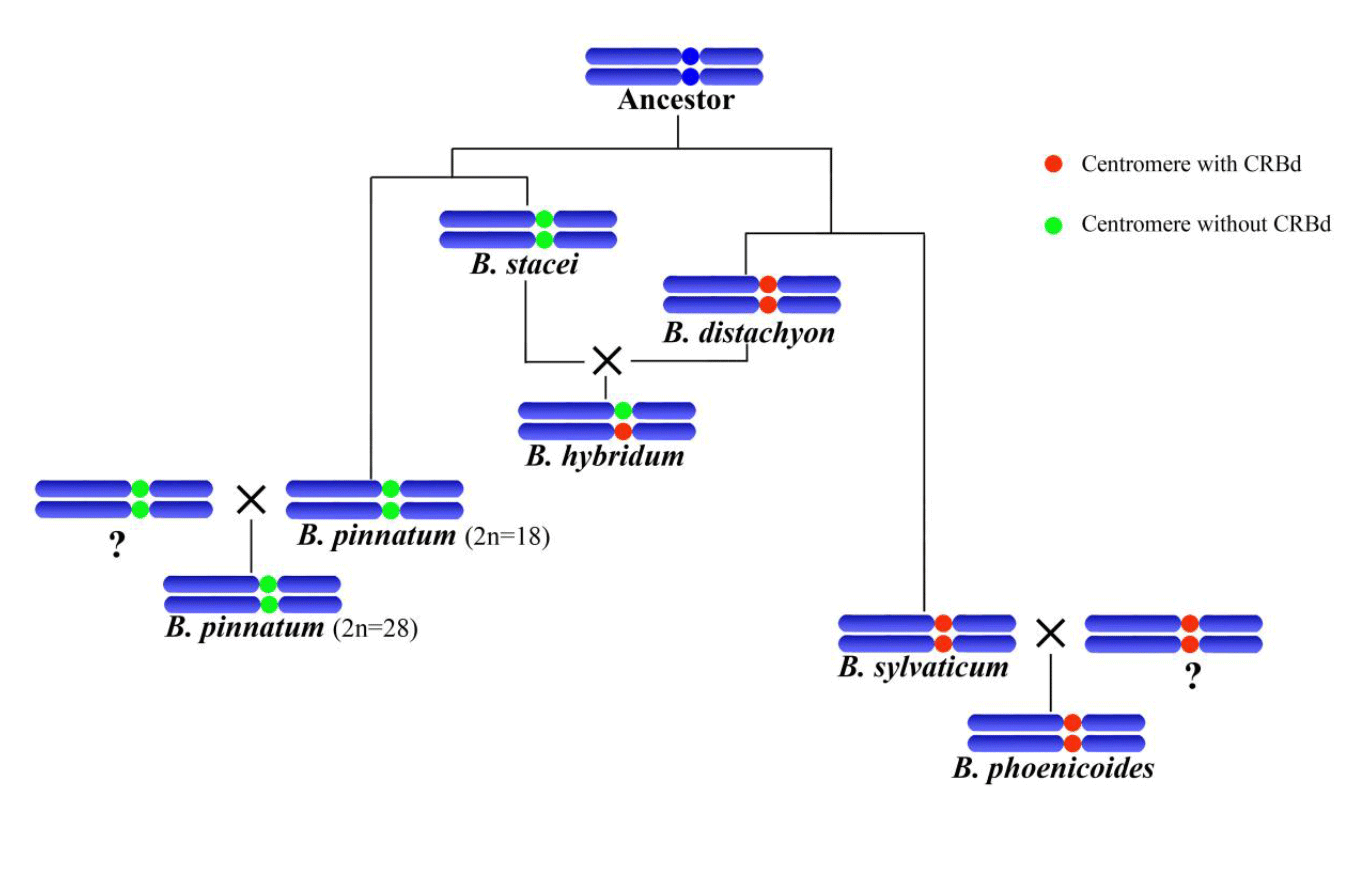博文
the plant journal:二穗短柄草着丝粒DNA特性研究
||
�
Centromeric DNA characterization in the model grass Brachypodium distachyon provides insights on the evolution of the genus
First author: Yinjia Li; Affiliations: Fujian Agriculture and Forestry University (福建农林大学): Fuzhou, China
Corresponding author: Kai Wang (王凯)
Brachypodium distachyon (二穗短柄草) is a well-established model monocot plant, and its small and compact genome has been used as an accurate reference for the much larger and often polyploid genomes of cereals such as Avena sativa (oats 燕麦), Hordeum vulgare (barley 大麦) and Triticum aestivum (wheat 小麦). Centromeres (着丝粒) are indispensable (不可或缺的) functional units of chromosomes and they play a core role in genome polyploidization events during evolution. As the Brachypodium genus contains about 20 species that differ significantly in terms of their basic chromosome numbers, genome size, ploidy levels and life strategies, studying their centromeres may provide important insight into the structure and evolution of the genome in this interesting and important genus. In this study, we isolated the centromeric DNA of the B. distachyon reference line Bd21 and characterized its composition via the chromatin immunoprecipitation (染色质免疫沉淀) of the nucleosomes (核小体) that contain the centromere-specific histone CENH3. We revealed that the centromeres of Bd21 have the features of typical multicellular eukaryotic centromeres. Strikingly (引人注目的), these centromeres contain relatively few centromeric satellite DNAs; in particular, the centromere of chromosome 5 (Bd5) consists of only ~40 kb. Moreover, the centromeric retrotransposons in B. distachyon (CRBds) are evolutionarily young. These transposable elements are located both within and adjacent to the CENH3 binding domains, and have similar compositions. Moreover, based on the presence of CRBds in the centromeres, the species in this study can be grouped into two distinct lineages. This may provide new evidence regarding the phylogenetic relationships within the Brachypodium genus.
二穗短柄草是单子叶植物模式物种,其基因组较小且十分完整,常被用作如燕麦、大麦和小麦等大基因组或多倍体基因组物种的参考基因组。着丝粒是染色体上不可或缺的一部分,在物种演化过程中的基因组多倍体事件中扮演重要作用。短柄草属有20多个物种,这些物种在基础的染色体数目、基因组大小、倍性水平和生活史策略上存在很大的不同,对于这些物种着丝粒的研究可以为该属植物的基因组结构和演化提供重要的参考作用。本文作者分离了二穗短柄草Bd21株系的着丝粒DNA,并且通过对含有着丝粒特异组蛋白CENH3的核小体进行染色质免疫沉淀的方法对着丝粒DNA进行定性分析。作者揭示了Bd21的着丝粒具有典型的多细胞真核生物着丝粒的特征。引人注目的是,这些着丝粒含有相对较少的着丝粒卫星DNA,尤其是5号染色体上的着丝粒仅~40 kb。此外,二穗短柄草着丝粒中的逆转座子CRBd在进化上较现代。这些转座元件处于CENH3结合结构域内或者毗邻这些结构域,并且具有类似的组成。此外,基于CRBd在着丝粒中的存在,本研究可以将短柄草属的物种分为两个不同的亚群。本文的研究将会为短柄草属内的进化关系提供新的证据。
通讯:王凯 (http://net.fafu.edu.cn/hist/13/f0/c6013a136176/page.htm)
个人简介:2006年,南京农业大学,博士;2011-2014年,美国威斯康辛大学,博士后。
研究方向:植物表观遗传;植物着丝粒结构与演化;植物分子细胞遗传学。
doi: 10.1111/tpj.13832
Journal: the plant journal
First Published date: 27 February, 2018
(P.S. 欢迎关注微信公众号:微信号Plant_Frontiers)
https://blog.sciencenet.cn/blog-3158122-1101699.html
上一篇:Nature Plants:玉米一个激活水杨酸信号转导的质外体多肽
下一篇:Plant Physiology:挪威云杉木材形成季节性转录图谱
全部作者的其他最新博文
- • Plant Physiology:CsMADS3促进柑果中的叶绿素降解和类胡萝卜素合成(华中农业大学)
- • Molecular Plant:LBD11-ROS反馈调节作用于拟南芥的维管形成层增殖和次生生长(浦项科技大学)
- • Science Advances:根结线虫通过调控植物的CLE3-CLV1模块,促进侵染进程(日本熊本大学)
- • Nature Communications:油菜素内酯参与植物营养生长期转变的分子机制解析(浙江农林大学)
- • Current Biology:光合作用产生的蔗糖驱动侧根“生物钟”(德国弗莱堡大学)
- • PNAS:花同源异型基因在叶中被抑制、花中被激活的分子机制(南卡罗来纳大学)
